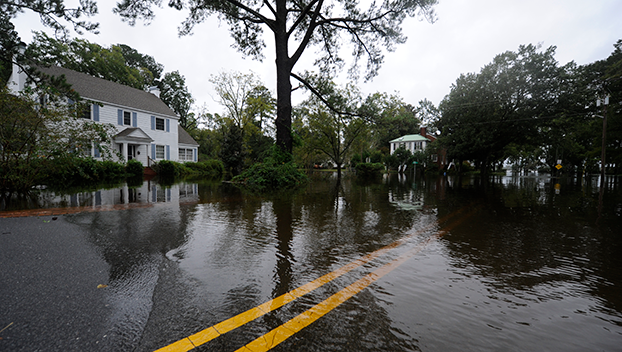Prepare for hurricanes now; official season begins June 1
Published 12:00 pm Saturday, May 15, 2021

- (Ashley Vansant / Washington Daily News)
|
Getting your Trinity Audio player ready...
|
This upcoming week marks National Hurricane Preparedness Week. As the official start of the Atlantic hurricane season approaches, experts with the National Weather Service are urging residents in inland areas like Beaufort County to start preparing for possible repercussions and damage from future storms.
Beaufort County is located in an evacuation zone, meaning if evacuation orders are given by a government agency or official, several routes are available for residents to find shelter further inland. The main evacuation route out of Beaufort County is U.S. Highway 264 West toward Greenville. In the case of an evacuation order, it is recommended to have several routes out of the area. If U.S. 264 West is overwhelmed, another route out of Beaufort County is U.S. Highway 17 North and South. Going north toward Williamston will link up to U.S. Highway 13 West toward Nash County while heading south toward New Bern will connect with U.S. Highway 70 West toward Johnston County.
In the event of an evacuation order, pack a bag with essentials like medication, non-perishable food items and clothing for several days. Maintaining a full tank of gas if a storm is anticipated to hit the area is encouraged and supplies that will last members of your household for three days are recommended. For those with pets, make plans to take your pet with you or find shelter for these animals to ensure the safety of all members of your household.
Because of Beaufort County’s proximity to the North Carolina coastline, the NWS encourages homeowners and renters in the area to look into flood insurance. Flooding is not usually covered under a standard homeowners policy and flood insurance is required to protect your home against possible damage to your structure and possessions. If given an evacuation order, make sure insurance documents are readily accessible and pack them in your things to ease the process of making a claim if necessary.
Another important step in protecting your home is strengthening it against potential threats from hurricanes. Before hurricane season starts, look into proper window coverings like plywood and aluminum or steel panels. These coverings are usually cost affordable and can protect the most vulnerable parts of your home from damaging debris and strong winds. Another step toward protecting your home is cutting back tree limbs around your property. These limbs can easily become detached during heavy winds and cutting them back can significantly reduce damage done to your home.
The NWS also encourages individuals to look out for your neighbors. Elderly residents tend to rely on neighbors for help and assistance before and after a hurricane hits an area. While completing your evacuation and preparedness plan, check in with your neighbors to ensure everyone in your neighborhood plays it safe in the event of an emergency caused by a hurricane.
The Atlantic hurricane season officially starts on June 1 but storms can occur before the season begins. The season lasts through Nov. 30 and early outlooks for the season from the National Weather Service predict 19 named storms, including eight hurricanes and four severe hurricanes. For more information about hurricane preparedness, visit the National Weather Service’s website at weather.gov/hurricane.


